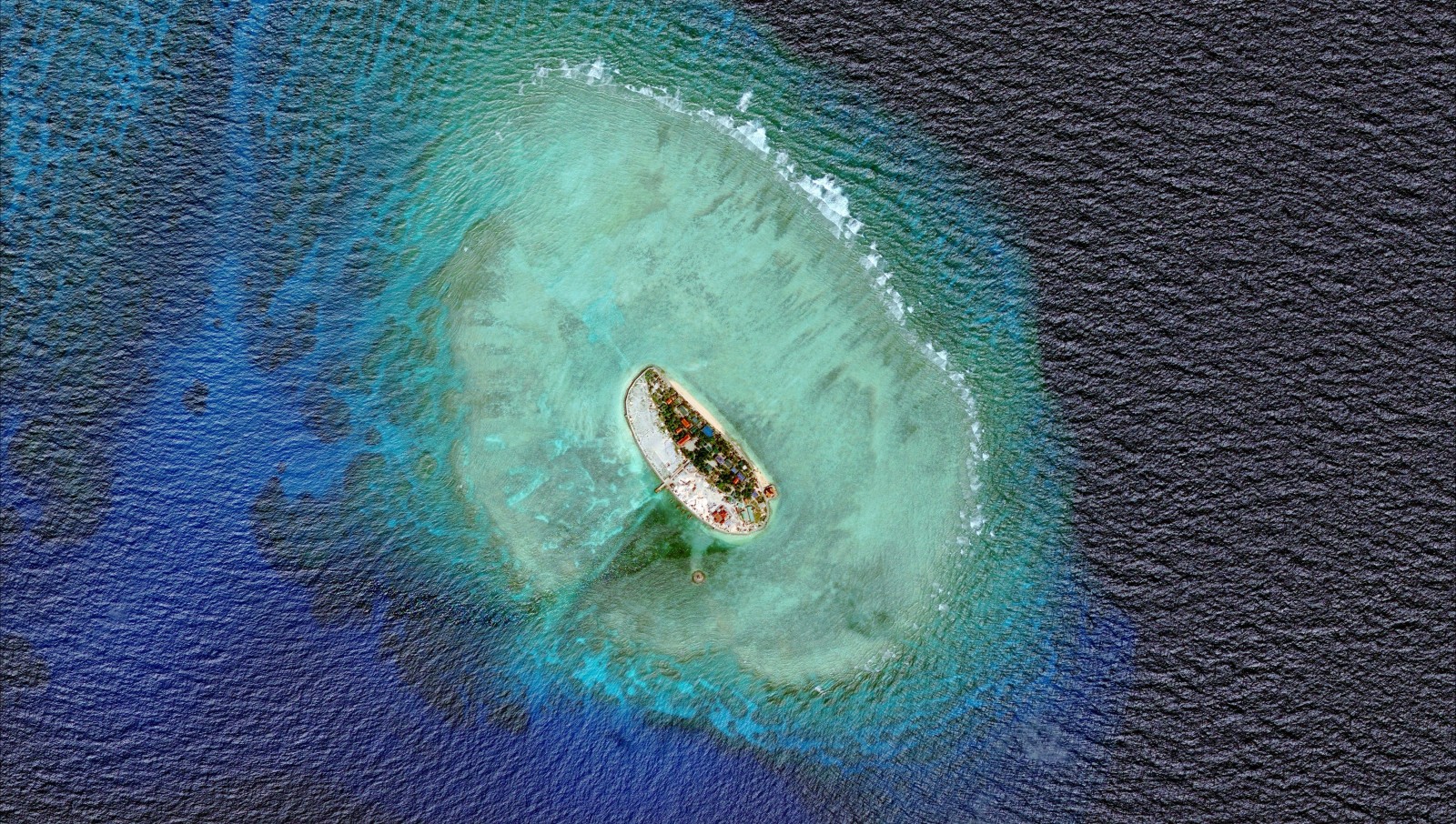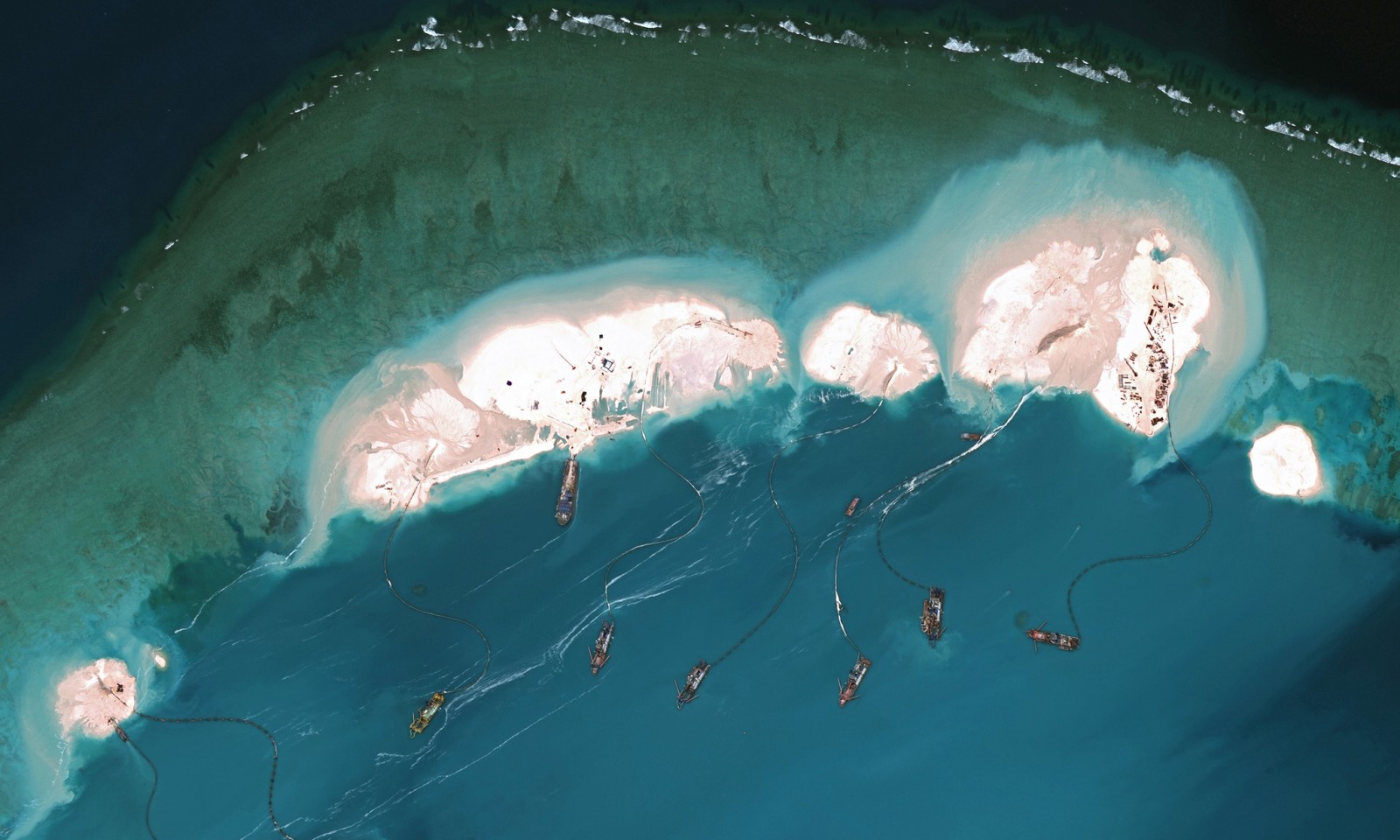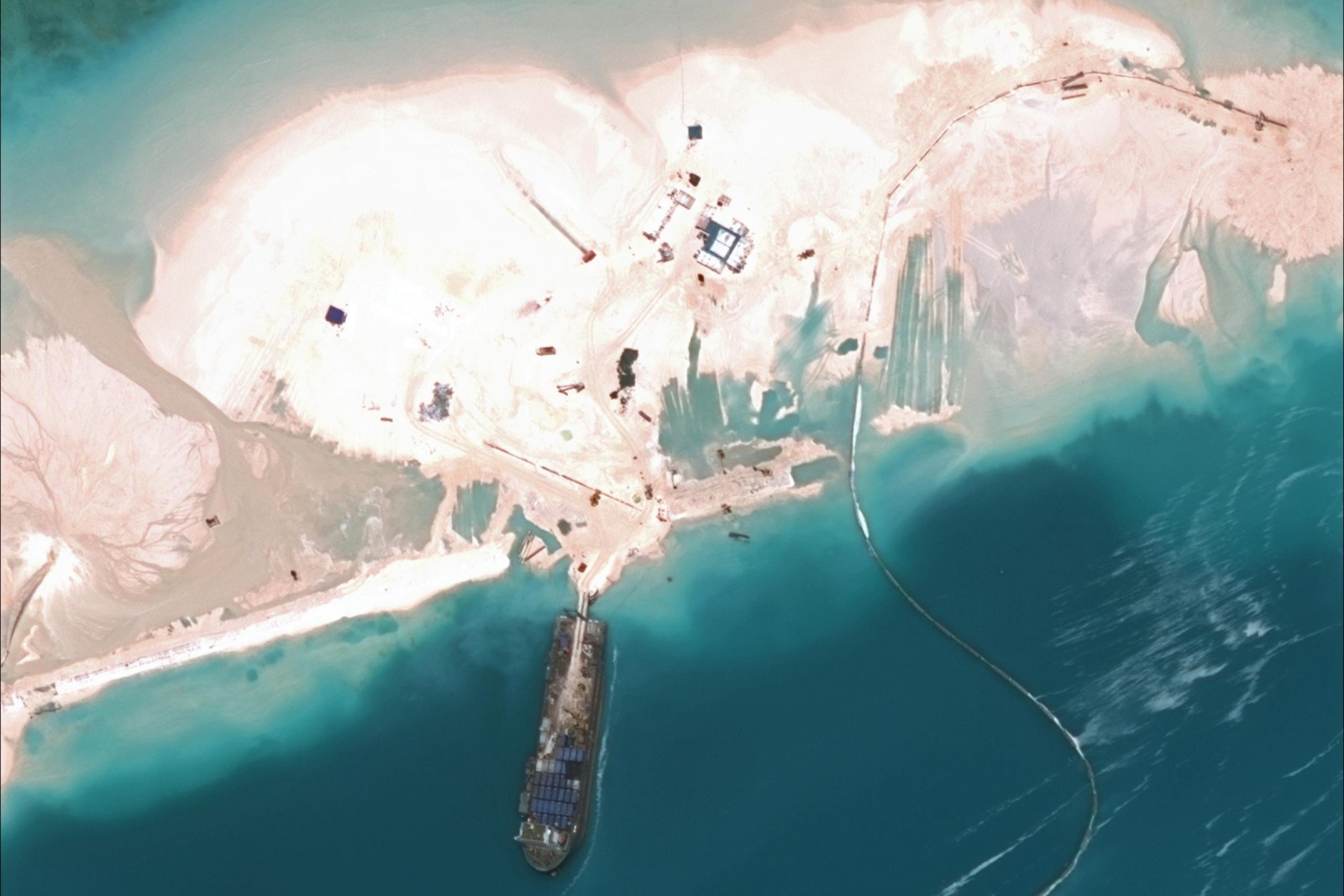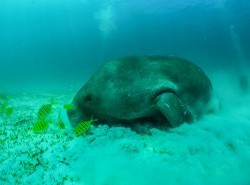The ongoing territorial dispute in the South China Sea is as much an ecological crisis as it is a geopolitical one. Dredging, land reclamation and the construction of artificial islands is likely swamping centuries old reefs in sediment, endangering ecosystems that play a key role in maintaining fish stocks throughout the region. According to leading marine biologist Professor John McManus, a proper understanding of the marine ecosystem and its role in food security is key to finding a solution to both the environmental and political issues.
McManus, Professor of Marine Biology & Fisheries at the University of Miami, is more familiar than most with the region’s contested reefs, atolls and shoals, having spent seven years in the northern Philippines monitoring seasonal fluctuations in coastal fish populations, amongst other things. McManus was puzzled to observe that dwindling fish stocks would recover seasonally, despite severe overfishing. “All of the South China Sea coastlines are over-fished, except maybe Brunei where oil rigs are refuges for fish populations,” McManus explains. “Yet species would become locally extinct, then a year or two later they’d be back.”
McManus discovered that periodic ‘pulses’ of larval fish were being carried on shifting currents throughout the South China Sea, replenishing coastal fish stocks and that they were being spawned in the offshore reef ecosystems at the heart of the current geopolitical fracas.
Conflict over territory in the South China Sea is not new, with China, the Philippines, Malaysia, Vietnam, Taiwan and Brunei all staking contrary claims. It has been making headlines again since China began building artificial islands in the Spratly Islands – something of a misnomer since the archipelago covers an area the size of Tunisia, only 4 sq km of which is above sea level. Or was. According to McManus, as of June 2015, satellite images appeared to indicate China had reclaimed a total of 12.82 sq km of land. In 2013, The Philippines filed an ongoing lawsuit at the UN International Court of Arbitration, questioning the legality of China’s territorial claims and its development of tidal reefs that are only periodically above water, which it alleges violates the United Nations Convention on the Law of the Sea (Unclos). China has refused to participate in the arbitration, questioning its validity.
China also claims its island building activities have caused only minimal, recoverable damage, but McManus, an expert in reef ecology, doubts this is the case. “The reef crest is a tiny thing about the same height as the tide range,” he explains. “That’s what is protecting everything – waves lose more than 90% of their energy when they hit the reef crest, reef flat and reef slope.” What’s more, this is an area that is prone to typhoons. “And you can’t build anything on an atoll without a wave-breaking crest in a big storm region.”
McManus concedes that if you build behind the reef crest, the impact could technically be minimal. “But that’s provided you haven’t messed with the ecosystem that is continually building the crest – then it could wear down and wash away.” China and to a lesser extent the other countries contesting the Spratly Islands, appear to have been dredging sand from within atolls, behind the fringing reef, effectively reclaiming land from the structure itself. “That sand is not a desert - it’s an important part of the atoll,” says McManus. “And we’ve found at least 20 areas that are being dredged like this.”
Dredgers sweep back and forth, creating clam shell patterns in the sand that are clearly visible by satellite. In the process, they destroy whatever lives there, including reef-building organisms, turtles and giant clams, while sending up plumes of corrosive sand and sediment that settle on surrounding reefs, killing them, McManus explains. For the many scientists who are predicting that coral reefs globally are in danger of disappearing by as early as the middle of the century due to bleaching, ocean acidification and rising seas, the reclamation is comparable to switching off an ailing patient’s life support.
Still, McManus is hopeful of finding a solution. He has long argued for a peace park in the Spratly Islands and now believes the time is ripe to broker a new agreement not unlike the Antarctic Treaty, which has been successful in preventing conflict and environmental degradation in the Antarctic since it was signed in 1959. “We need a joint resources management agreement, a code of conduct and a freeze on claims and all claim-supporting activities for 30 to 50 years,” he says. This would prevent further posturing by any of the claimants, control the activities of fishing fleets and protect the ecosystems so vital to food security.
Then there is the potential for marine based tourism. The Spratly Islands are contiguous with the Coral Triangle bioregion, the pinnacle of marine biodiversity on the planet. Just 400 miles away, Tubbataha Marine Park off the coast of Palawan in the Philippines is an example of how an offshore reef can go from being over-exploited to successfully managed. A Unesco world heritage site that was set up in 1993, Tubbataha plays the same role as its counterpart in the South China Sea, stocking the entire Sulu Sea with fish. It has also been listed among the best dive destinations in the world. In the last couple of years, whale sharks as well as tiger sharks and other apex predators have been sighted in the park, a sure sign of a healthy, recovering ecosystem.
The Spratly Islands have similar potential, says McManus. “These are some of the most beautiful reefs I’ve ever seen with some of the highest levels of biodiversity in the world,” he says. “And they’re covering them with sand to build airports on them.” Instead of a proliferation of military bases, there could be dive resorts and live aboard boats operating in these waters.
Unless of course this is about the oil and gas reserves beneath the Spratly Islands. But many now doubt the extent of these reserves and the potential for extraction. It’s far more likely that China is consolidating its position in one of the most lucrative shipping channels in the world, part of its grand plan to establish a Maritime Silk Road through South and South East Asia to Africa and the Mediterranean. McManus hopes that having established its territorial claim - effectively by building it - China will now adopt a more conciliatory position.
It is arguably in Beijing’s interest to deescalate tensions, as it seeks to consolidate its position as a leader on the regional and global stage. It will not be able to do that by alienating its neighbours and conflict in the South China Sea could result in billions of dollars of lost trade. “Antarctica has been one of the most successful environmental treaties in history,” says McManus. “China is now in a position to benefit tremendously by taking the lead on this.”














